Data:
I have the following vector field:
Goal
I would like to have the arrow transparency proportional to the arrow length.
My Attempt:
I set the "alpha" value equal to the length:
import numpy as np
import matplotlib.pyplot as plt
# DATA FIELD (1,N,M)
dz = np.array([[[0.24884899, 0.24884899, 0.24884899, 0.24884899, 0.24884899,
0.24884899],
[0.248849 , 0.248849 , 0.248849 , 0.248849 , 0.248849 ,
0.248849 ],
[0.24885767, 0.24885513, 0.24885108, 0.24885113, 0.2488552 ,
0.24885767],
[0.2451304 , 0.24563262, 0.24642831, 0.24641793, 0.24561579,
0.2451304 ],
[0.0764377 , 0.12581053, 0.09866768, 0.10043774, 0.12461962,
0.0764377 ],
[0.03382106, 0.03394624, 0.03414449, 0.03414171, 0.03394174,
0.03382106]]])
dx = np.zeros(np.shape(dz))
dy = np.zeros(np.shape(dz))
# DATA POINTS (N,)
X = np.array([0. , 0.2, 0.4, 0.6, 0.8, 1. ])
Y = X
Z = np.array([-500., -360., -220., -80., 60., 200.])
# COMPUTE LENGTH OF VECTORS
length = np.sqrt(dx[0]**2+ dz[0]**2)
# PLOT 2D Cross-Section of vector field
fig = plt.figure(dpi=300)
Q = plt.quiver(X, Z, dx[0], dz[0], length, units='xy' ,angles='xy', scale=0.005,
pivot = "tail", headaxislength = 5, headlength = 5, cmap='jet', alpha = length)
fig.colorbar(Q)
plt.gca().invert_yaxis()
plt.ylabel("Z")
plt.xlabel("X")
plt.title("2D Cross-Section")
Problem:
... I get:
TypeError: alpha must be a float or None
Edit
3D Vector Field to test
import matplotlib.pyplot as plt
import numpy as np
plt.rcParams["figure.figsize"] = [7.50, 3.50]
plt.rcParams["figure.autolayout"] = True
fig = plt.figure(dpi = 300)
ax = fig.add_subplot(projection='3d')
x, y, z = np.meshgrid(np.arange(-0.8, 1, 0.2),
np.arange(-0.8, 1, 0.2),
np.arange(-0.8, 1, 0.2))
u = x
v = y
w = z
ax.quiver(x, y, z, u, v, w, length=0.2)
ax.axis('off')
plt.show()
Edit 2
The resulting plot does not have consistent alpha values. It seems that some long vectors are still not transparent. The transparency should increase linearly from the center, which is not the case here:
import numpy as np, matplotlib.pyplot as plt
def plot_3d_quiver(x, y, z, u, v, w):
c = np.sqrt(np.abs(v)**2 + np.abs(u)**2 + np.abs(w)**2)
length = np.repeat(((c - c.min())/(c.max() - c.min())).ravel(), 3)
c = (c.ravel() - c.min())/c.ptp()
c = np.concatenate((c, np.repeat(c, 2)))
c = plt.cm.jet(c)
# INVERT -> Long vectors should be more transparent
c[:, -1] = 1 - length
fig = plt.figure(dpi = 300)
ax = fig.gca(projection = '3d')
ax.quiver(x, y, z, u, v, w, length = .5, arrow_length_ratio = 0.2, alpha=c)
# ax.axis('off')
x, y, z = np.meshgrid(np.arange(-0.8, 1, 0.2),
np.arange(-0.8, 1, 0.2),
np.arange(-0.8, 1, 0.2))
u = x
v = y
w = z
plot_3d_quiver(x, y, z, u, v, w)
plt.show()





